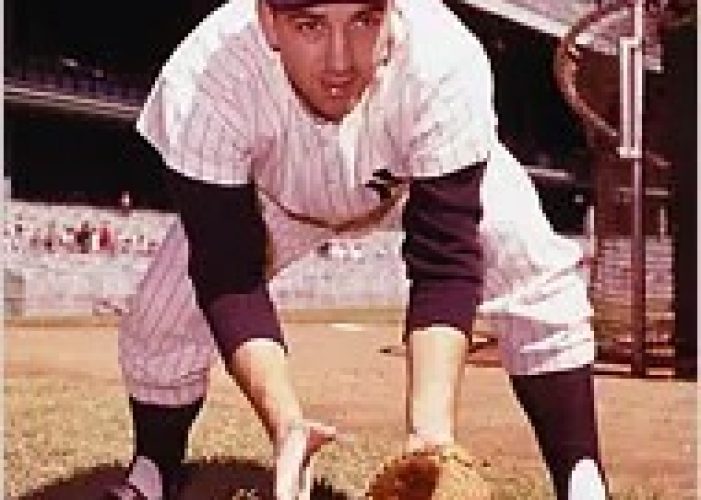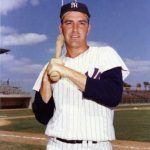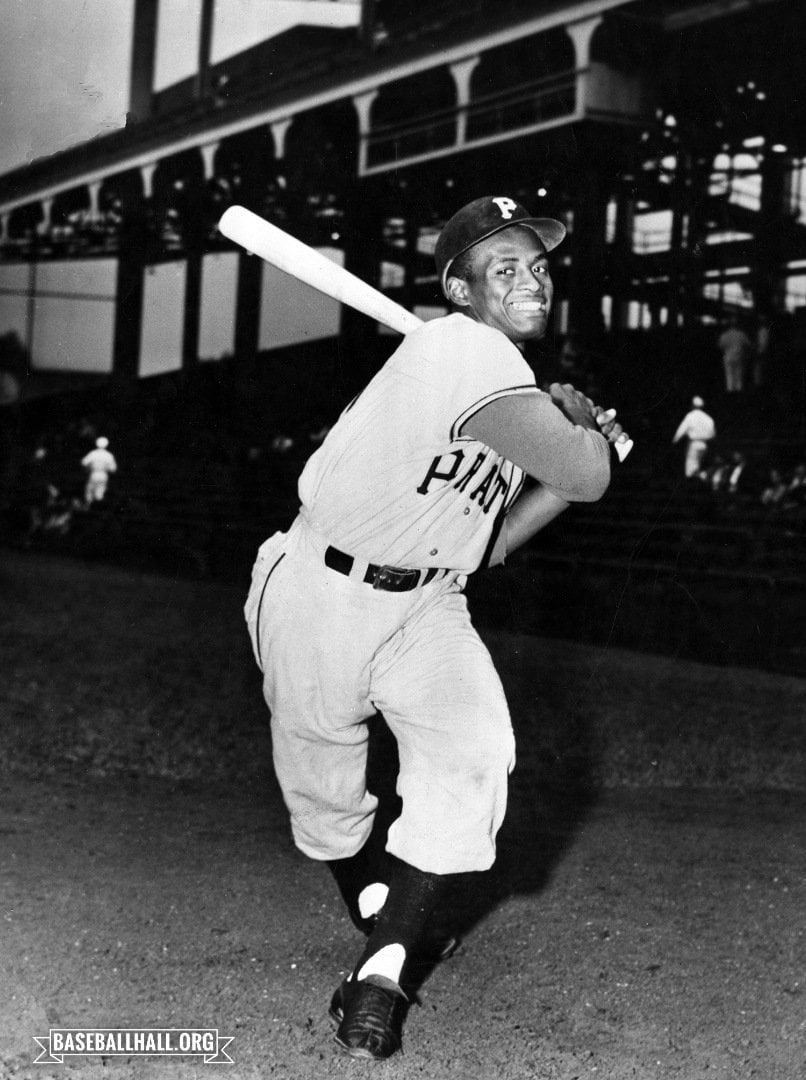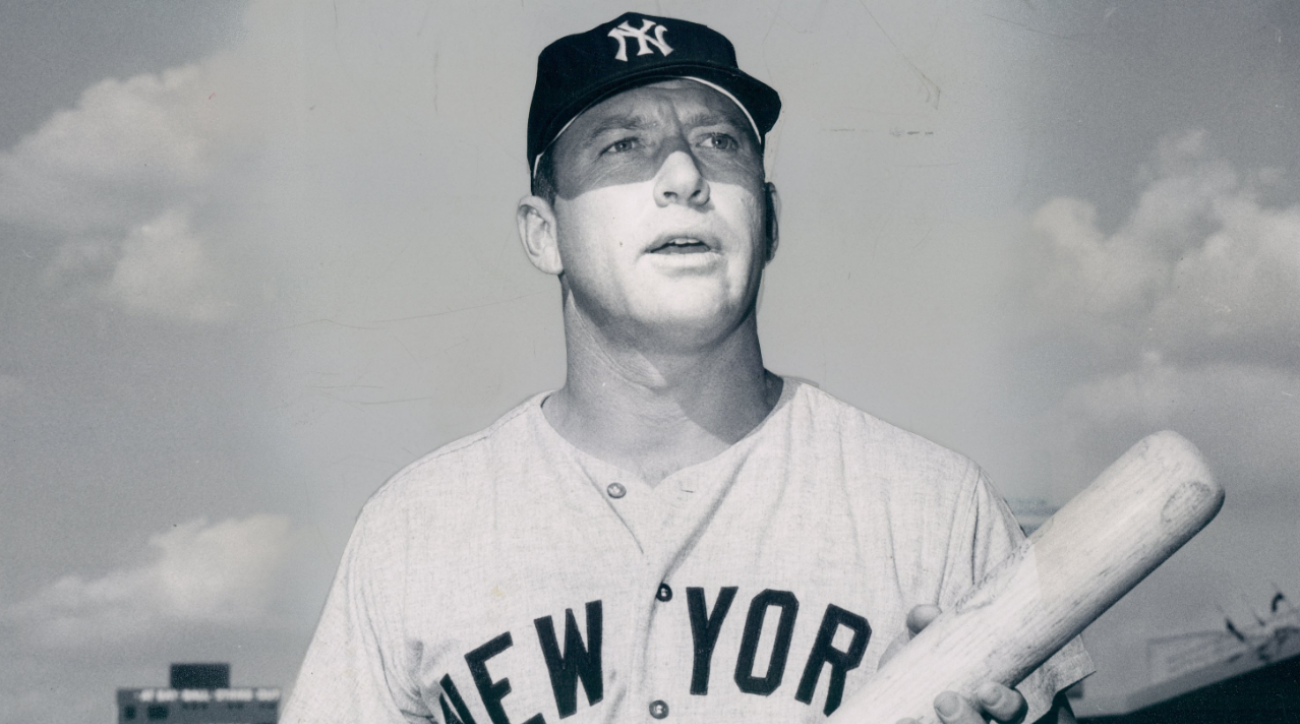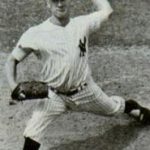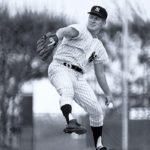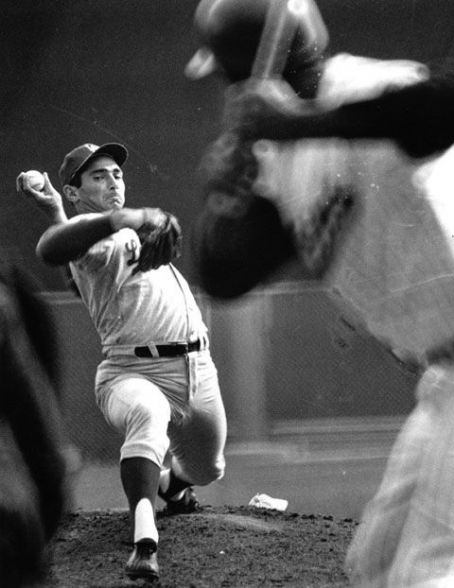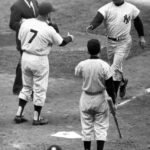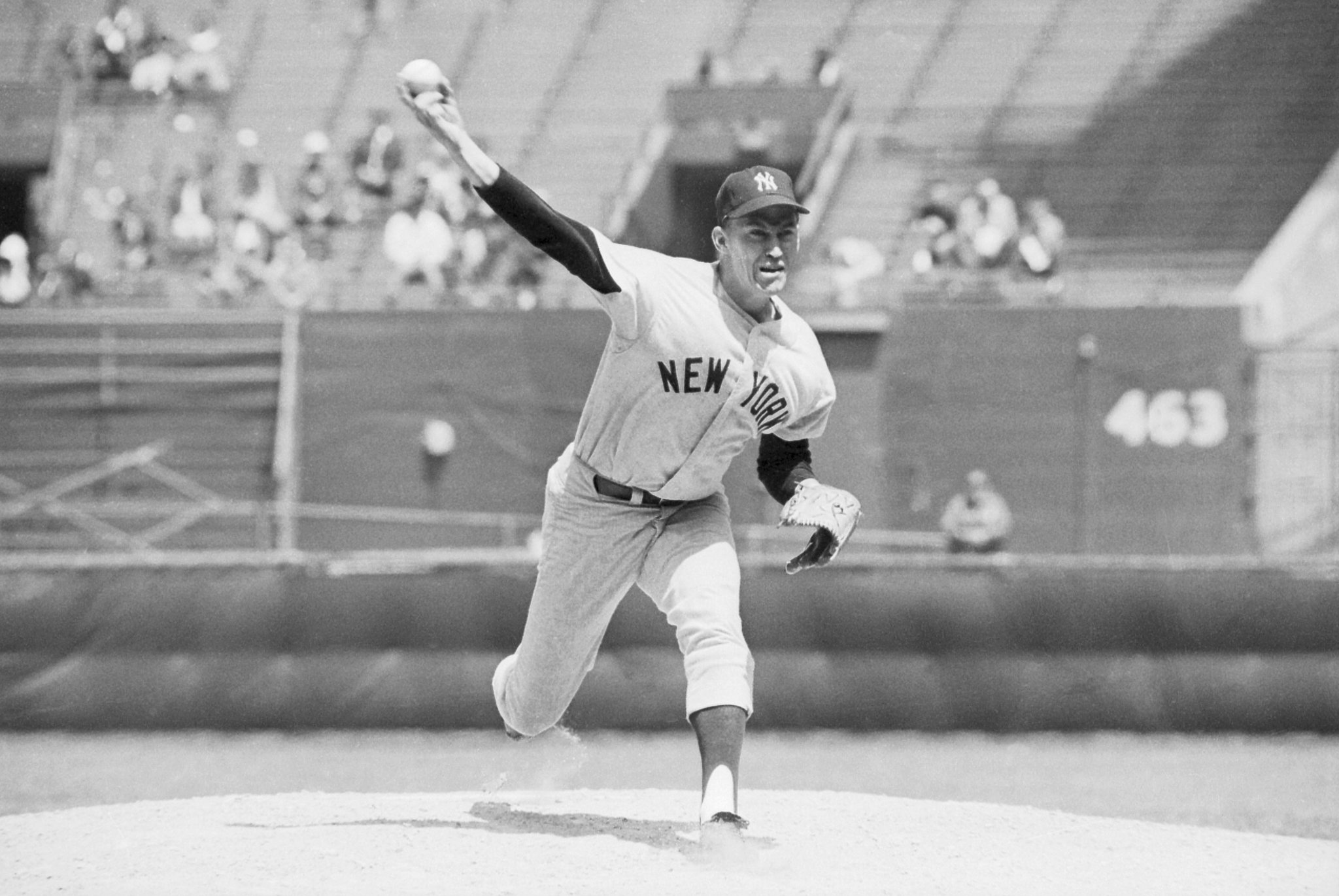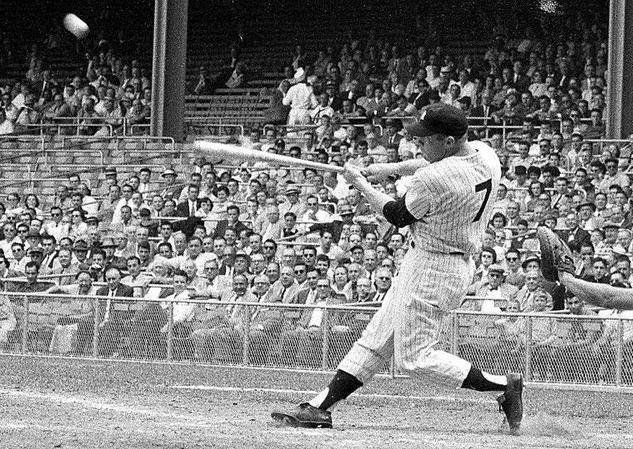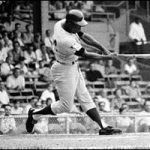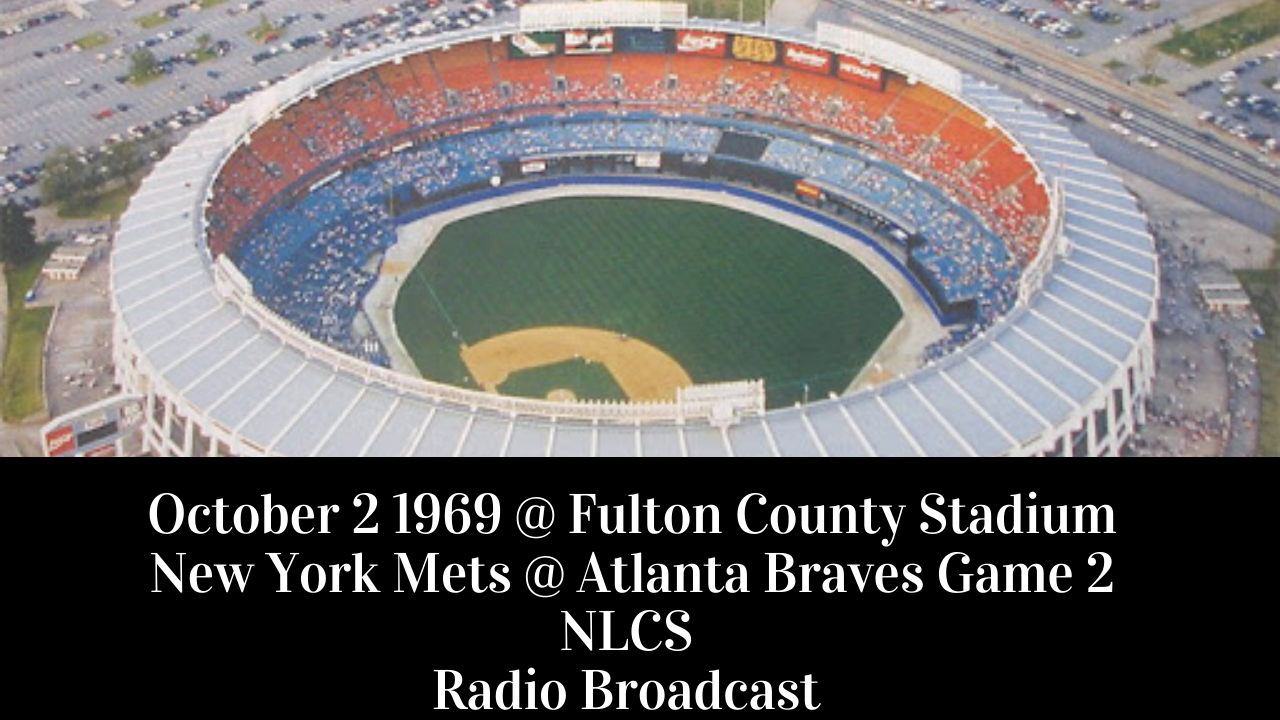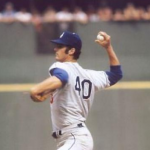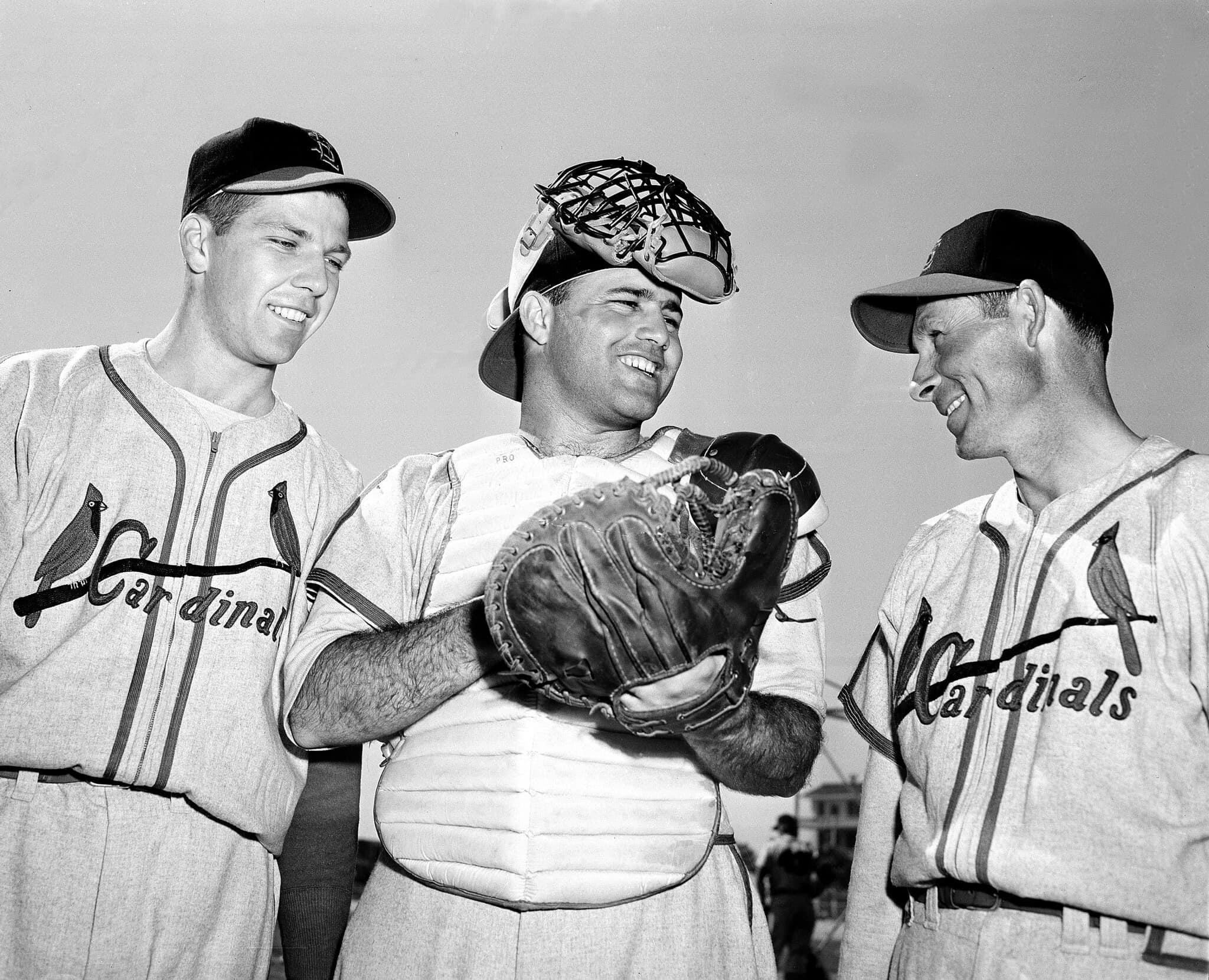Clete Boyer
Positions: Third Baseman, Shortstop and Second Baseman
Bats: Right • Throws: Right
6-0, 165lb (183cm, 74kg)
Born: February 9, 1937 in Cossville, MO us
Died: June 4, 2007 (Aged 70-115d) in Lawrenceville, GA
Buried: Friends Cemetery, Purcell, MO
High School: Alba HS (Alba, MO)
Debut: June 5, 1955 (Age 18-116d, 8,868th in MLB history)
vs. BOS 0 AB, 0 H, 0 HR, 0 RBI, 0 SB
Last Game: May 23, 1971 (Age 34-103d)
vs. NYM 4 AB, 1 H, 0 HR, 0 RBI, 0 SB
Full Name: Cletis Leroy Boyer
View Player Bio from the SABR BioProject
Relatives: Brother of Cloyd Boyer, Ken Boyer
Perhaps the most overlooked and underrated player on the New York Yankee pennant-winning teams of the early 1960s, Clete Boyer spent much of his career being overshadowed by some of the game’s most talented players. He took a backseat to stars such as Mickey Mantle, Roger Maris, and Whitey Ford during his time in New York, before being cast in a supporting role to Hank Aaron, Joe Torre, and Felipe Alou in Atlanta. Boyer also never received the credit he deserved for being a superb defensive player since the third baseman’s career coincided with that of the great Brooks Robinson. Nevertheless, Boyer was among the top third basemen of his era, and he was one of the premier defensive players at his position in the history of the game.
Biography:
One of 14 children, Cletis Leroy Boyer was born in Cassville, Missouri on February 9, 1937. As a youngster, Boyer received much of his baseball education playing with and against four of his older brothers, each of whom ended up playing baseball professionally. Two of his elder siblings, Ken and Cloyd, eventually made it to the major leagues – Ken, as an outstanding third baseman, and Cloyd, as a journeyman pitcher. After graduating from Missouri’s Alba High School, Clete signed with the Kansas City Athletics as an 18-year-old amateur free agent in 1955. The “bonus baby” jumped directly to the major leagues, joining Kansas City later that year as a utility infielder. He saw limited playing time over the next three seasons, appearing in a total of 124 games for the Athletics, before being traded to the Yankees as part of a 13-player deal that also sent former A.L. MVP pitcher Bobby Shantz to New York. Boyer then spent most of the next three years in the Yankee farm system, being called up by the big club for good during the latter portion of the 1959 campaign.
Early Years in New York:
Boyer spent much of the 1960 season shifting back and forth between third base and shortstop for the Yankees, failing to win an everyday starting job in manager Casey Stengel’s rotational system. Boyer split his playing time with incumbent third basemen Gil McDougald and Andy Carey, often being pinch-hit for by Stengel, who displayed little confidence in Boyer’s hitting ability. In fact, the youngster experienced a rather humbling moment in the first game of the World Series against the Pittsburgh Pirates when Stengel sent up Dale Long to hit for him with the Yankees trailing 3-1 in the second inning. Boyer failed to make another appearance in the Series until Game Six, and he later admitted that he never forgave Stengel for humiliating him in that fashion. Boyer even went so far as to say that he “hated” playing for Stengel.
New York’s loss to Pittsburgh in the World Series prompted the firing of Stengel, who was replaced at the helm by Ralph Houk. The new Yankee manager helped restore some of Boyer’s shattered self-confidence by installing him immediately as the team’s starting third baseman. Although Boyer batted just .224 in his first full season as a starter, he rewarded the faith Houk placed in him by leading all American League third basemen in putouts, assists, and double plays for the first of three consecutive times. Yet, Baltimore’s Brooks Robinson walked away with the Gold Glove Award each year.
One of American League’s Top Third Basemen:
Boyer had his finest offensive season with the Yankees in 1962, when he hit 18 home runs, knocked in 68 runs, scored 85 others, and batted a career-high .272. He also batted .318 against the Giants in the World Series, helping the Yankees win Game One with a seventh-inning home run.
Although Boyer compiled rather mediocre offensive numbers in each of the next four seasons he spent with the Yankees, he continued to establish himself as one of the game’s top players at his position with his stellar defensive play. Yet, it was Boyer’s misfortune to consistently come up short in comparisons to two of the finest third basemen of his time – Brooks Robinson and Ken Boyer. Robinson also played in the American League, was a better hitter than Clete, was generally considered to be a better fielder, and won the Gold Glove award annually. Brother Ken played in the National League, mostly with the Cardinals. Although not quite as good a fielder as his younger brother, Ken was a much better hitter and, therefore, also received far more recognition.
Also preventing the Yankee third baseman from receiving much in the way of notoriety were the many outstanding players he played alongside during his time in New York. Mickey Mantle, Roger Maris, Elston Howard, Yogi Berra, and Moose Skowron were all far more productive hitters, and they also received much more media attention. Furthermore, the righthanded-hitting Boyer had to play half his games in Yankee Stadium, with its Death Valley in left and leftcenter field. As a result, his power numbers and run production invariably suffered.
Still, Boyer’s teammates knew how important the third baseman was to the success of the team. In particular, they appreciated his outstanding defense, which many of them considered to be equal to that of Brooks Robinson.
In his book Few And Chosen, Whitey Ford described Boyer as, “…the best third baseman I’ve seen, including Brooks Robinson”.
Mickey Mantle said, “Cletis Boyer, I think, was as good a third baseman as Brooks Robinson, and I thought Brooks Robinson was great.”
While Robinson may have been a little quicker and had slightly better reflexes, Boyer had something that Robinson lacked – a powerful throwing arm. Robinson typically released the ball quickly to make sure he got the out at first base, but he didn’t have a particularly strong arm. However, Boyer’s arm was so strong that he frequently threw out runners from his knees. He had the ability to dive either into the shortstop hole or down the third base line, and then throw out the batter from a kneeling position.
Robinson himself said, “I’ve seen a lot of great third basemen, but none better than Clete Boyer. In the sixties, I thought Boyer was the best I ever played against.”
Later Years:
Clearly in a rebuilding mode after finishing last in the American League in 1966, the Yankees traded Boyer to Atlanta for Minor League Player of the Year Bill Robinson at season’s end. Away from Yankee Stadium and its far-reaching fences, Boyer established career-highs in home runs (26) and runs batted in (96) in 1967. Two years later, he won the only Gold Glove of his career.
Boyer continued to sparkle at third base until he was released by the Braves on May 28, 1971, after a bitter feud with General Manager Paul Richards and manager Lum Harris over mismanagement. Boyer complained that the organization didn’t teach the players the proper fundamentals. Richards countered that Boyer was a troublemaker. After being released by the Braves, Boyer chose to accept an offer to play for Japan’s Taiyo Whales, with whom he spent the next four seasons. After retiring in 1975, he became the defensive coach for the Whales in 1976. Boyer later returned to the Major Leagues as a third-base coach with the Yankees and the Oakland Athletics. Boyer died on June 4, 2007 from complications of a brain hemorrhage in an Atlanta area hospital. He was 70 years old.

